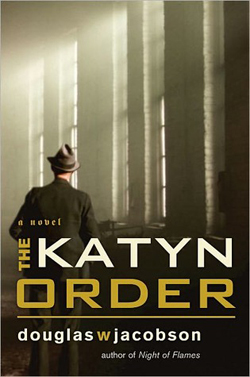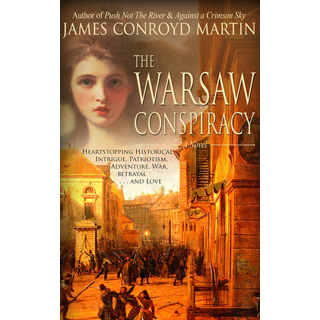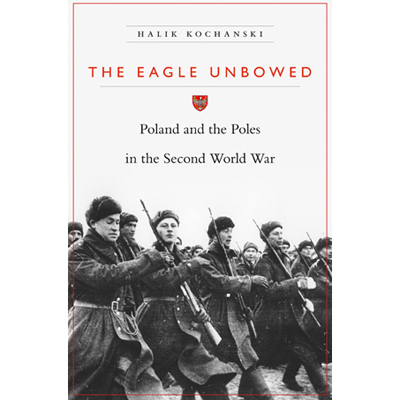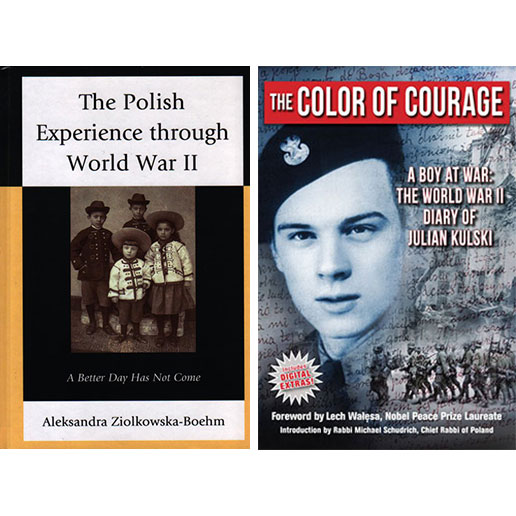 The Katyń Order: A Novel of WWII
The Katyń Order: A Novel of WWII
By Douglas W. Jacobson
McBooks Press, 2011
It is 1944. “The German War Machine is in retreat as the Russians advance. In Warsaw, Resistance fighters rise up against their Nazi occupiers, but the Germans retaliate, ruthlessly leveling the once beautiful city. American Adam Nowak has been dropped into Poland by British intelligence as an assassin and Resistance fighter. During the Warsaw Rising he meets Natalia, a covert operative who has lost everything – just as he has. Amid the Allied power struggle left by Germany’s defeat, Adam and Natalia join in a desperate hunt for the 1940 Soviet order authorizing the murders of 20,000 Polish Army officers and civilians. If they can find the Katyń Order before the Russians do, they may change the fate of Poland. The fate of millions depends on them.”
The flyleaf of Douglas W. Jacobson’s new novel, “The Katyń Order,” sets the stage for a riveting story of love, adventure and intrigue set in WWII Poland. Those who enjoyed James Martin’s “Push Not the River” and “Against the Crimson Sky,” or Alan Furst’s “The Polish Officer” will not want to miss Jacobson’s new book. Not only history buffs, but fans of mystery, adventure, and love stories will enjoy this fast-paced and suspenseful historical novel.
This easy-to-read tale of love between “Wolf” and “The Conductor” (pseudonyms of the two star-crossed Polish resistance fighters) is engaging, from start to finish. Will the lovers survive the war? Separated by war and emotionally scarred, will their paths cross again? Who will be the first to locate “the order” to kill Polish officers – the NKVD (Stalin’s secret police) or the AK (Armia Krajowa, i.e., the Polish Home Army)? Will proof that the Soviet secret police killed 22,000 Polish nationals in 1940 embolden the Western powers to oppose Joseph Stalin’s territorial designs on Poland? Jacobson’s fictional characters plausibly move through the world of historical figures and events of the time.
Jacobson’s vivid description of the Poles’ 63-day uprising of 1944 to liberate Warsaw from Nazi German occupation is emotionally draining. The reader feels the exhaustion of the resistance fighters and the impact of mind-numbing death and destruction. The twists and turns of this story of love that blooms in the midst of abysmal horror, and the struggle to survive death at the hands of both the Nazis and the Soviets keep the reader on edge throughout the narrative.
A careful reader might be bothered by some inauthentic dialog, e.g., “Six o’clock. And that would be in the morning.” Poles use military time, making this confusion implausible. It is not likely that a Resistance fighter would reveal his or her true identity, particularly to a loved one, endangering their lives by the disclosure. The random spelling of names (e.g., Casimir / Kazimierz) might annoy some, but these are minor details that do not interfere with the story line. There are no Polish diacritical marks to intimidate Western readers. The phrase “Polish camps” is used, but it is clear from the book’s context, that the concentration camps were Nazi German. The many “coincidences” that seal the fate of the star-crossed lovers might seem a bit far-fetched, but overall, the story is captivating and credible.
For so long a subject ignored, if not actively suppressed, Katyń is at last getting attention. In recent years, books and articles, ranging from the scholarly “Katyń: A Crime Without Punishment” published by Yale University Press, to a new, expanded edition of Allen Paul’s moving history of Katyń, and Wesley Adamczyk’s personal memoir (reviewed in CR in 2010) have been published; Andrzej Wajda produced his monumental feature film, “Katyń,” while others have made documentaries, among them Piotr Uzarowicz’s “The Officer’s Wife” (we interviewed him last year). The tragic plane crash at Smolensk that killed Polish president Kaczyński as well as his wife and over eighty military and political figures in 2010, brought to the attention of the world, as never before, the story of the Katyń forest massacre.
Douglas Jacobson’s new novel, “The Katyń Order,” is possibly the first use of Katyń as background for fiction. He does it well, seamlessly weaving the “history lessons” into the narrative. Warsaw and Kraków City Maps help the reader locate the “action.” A worthy follow-up to Jacobson’s “Night of Flames: A Novel of World War II,” and a good read.
CR



